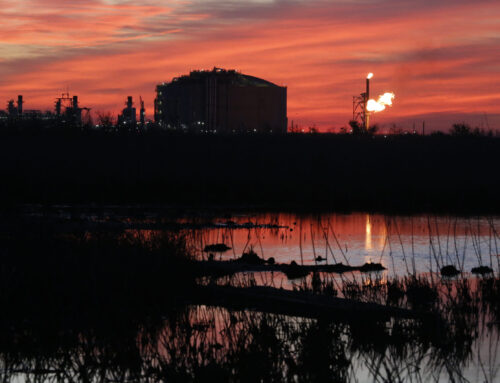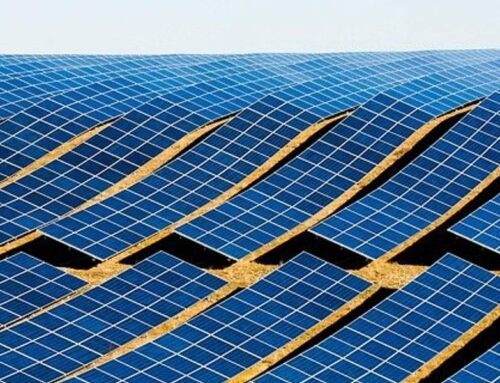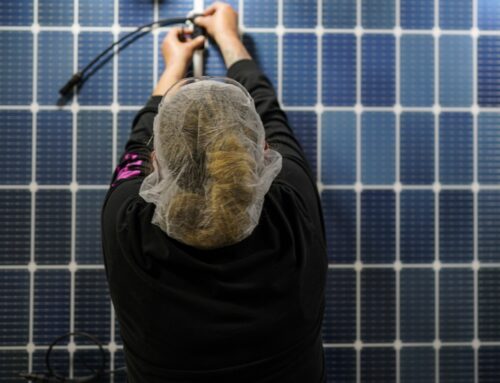How do renewables contribute to energy security?
June 27, 2025
While a precarious ceasefire is currently holding between Iran and Isreal, the escalating conflict between the two nations over recent weeks has brought global energy security back into the spotlight.
In response to US attacks on its nuclear facilities, Iran threatened to close the Strait of Hormuz, a vital shipping passage for global energy supplies.
Such a move has the potential to disrupt access to fossil fuels for countries around the world and send energy prices soaring. Roughly 20% of the world’s liquefied natural gas and almost 27% of its crude oil passes through the narrow waterway connecting the Persian Gulf to the Gulf of Oman.
Many argue that transitioning away from fossil fuels is crucial not only for the climate but for energy security, with homegrown renewables offering stable power amid geopolitical tensions.
What is energy security and why is it important?
Energy security refers to uninterrupted access to power at an affordable price, according to the autonomous intergovernmental International Energy Agency.
The lifeblood of modern economies, energy is vital for everything from manufacturing, transport and communication, to education and agriculture.
As such, disruptions to supply can bring industries grinding to a halt, hinder essential services like healthcare, and even compromise national security by hampering military operations.
In the 1970s, disruptions to oil exports led to sharp rises in prices, long lines at gas stations, and shook the global economy. More recently, the energy crisis following Russian President Vladimir Putin’s 2022 invasion of Ukraine, revealed Europe’s energy vulnerability due to its reliance on imported Russian gas.
Are renewables more stable than fossil fuels?
The latest Iran-Israel conflict further underlines the global dependence on oil imports, according to experts at the UK-based energy think tank Ember.
According to their analysis of IEA data, 79% of the world’s population lives in oil-importing countries, with 62 sourcing all of their oil from other countries. 90 nations — including Spain, South Korea, Germany, Turkey and India — rely on imports for more than 80% of their needs.
In climates of unstable global trade and mounting geopolitical tensions, such reliance on imports can lead to energy security risks, says Ember. And upset in fossil fuel markets causes price volatility for all countries reliant on oil and gas.
Renewables, experts say, can offer a stable and secure alternative. They can generate power within a country’s borders or nearby neighboring countries, thereby shielding against price volatility or geopolitical risks. Diversifying power supply options is seen as a key part of a resilient energy system.
No place like home – even for energy
Research from the International Monetary Fund also indicates that over the past decades, most fossil-fuel producing countries have become more politically risky and exhibit less democratic freedom.
“The more we have home grown energy sources the better,” says Fatih Birol, executive director of the IEA, emphasizing the need to secure energy “not from one single country, not from one single trade route, and not from one single company.”
Birol highlights how energy security is an increasingly important driver for the transition to clean power.
“As our energy dependency on fossil fuels goes down, our energy security goes up. That is the lesson we have learnt in Europe,” said Ursula von der Leyen, president of the European Commission, at a summit on the future of energy security in April this year.
Von der Leyen said that in response to the energy crisis following Russia’s invasion of Ukraine, Europe had accelerated the “roll-out of home-grown renewable energy”, which now accounts for 47% of the electricity mix.
Does the clean energy transition bring its own new risks?
The path to greater energy security includes both shifting to more localized renewables and expanding electrification, according to Ember, an approach they highlight China as following.
Their estimates suggest fossil fuel imports could be reduced 70% globally by increasing electric vehicles, heat pumps and renewable energy. Boosting EVs could help replace 33% of imported oil and ramping up wind and solar for power generation could save a further 23%.
They add that 92% of the world’s population can meet more than ten times their energy needs with renewables.
There are, however, also risks associated with the green transition.
In April a large blackout across Spain and parts of Portugal raised questions about the stability of renewables like solar and wind that rely on specific weather conditions. Shortly before the event, renewables accounted for around 70% of Spain’s electricity production.
However, the government has since stated that a combination of planning issues and technical faults caused the outage and said there was no evidence an excess of renewables played a role.
And when it comes to the potential intermittency of renewables, according to the IMF, there are already very advanced solutions to make the electricity system more robust and flexible, including investing in grid infrastructure and energy storage.
There are concerns that the shift to clean energy could also bring a new import dependency for metals and minerals needed to build renewable infrastructure and storage.
However, experts say a shortage of transition materials wouldn’t create an energy crisis like it would in the case of fossil fuels, as they are only needed for expanded capacity rather than ongoing power generation.
Investigations have revealed cases of serious environmental pollution among communities located beside mines for metals such as nickel, which is used widely for electric vehicle batteries.
Stricter regulations on waste management, improved monitoring and introducing cleaner technologies for extraction are seen as ways of lowering the impact of such mining.
Edited by: Tamsin Walker
Search
RECENT PRESS RELEASES
Related Post



